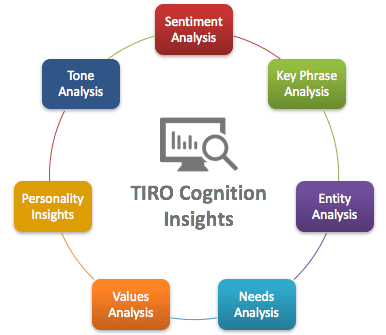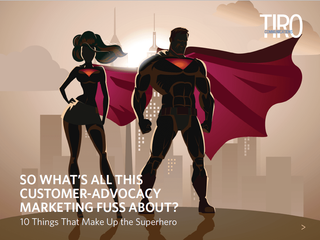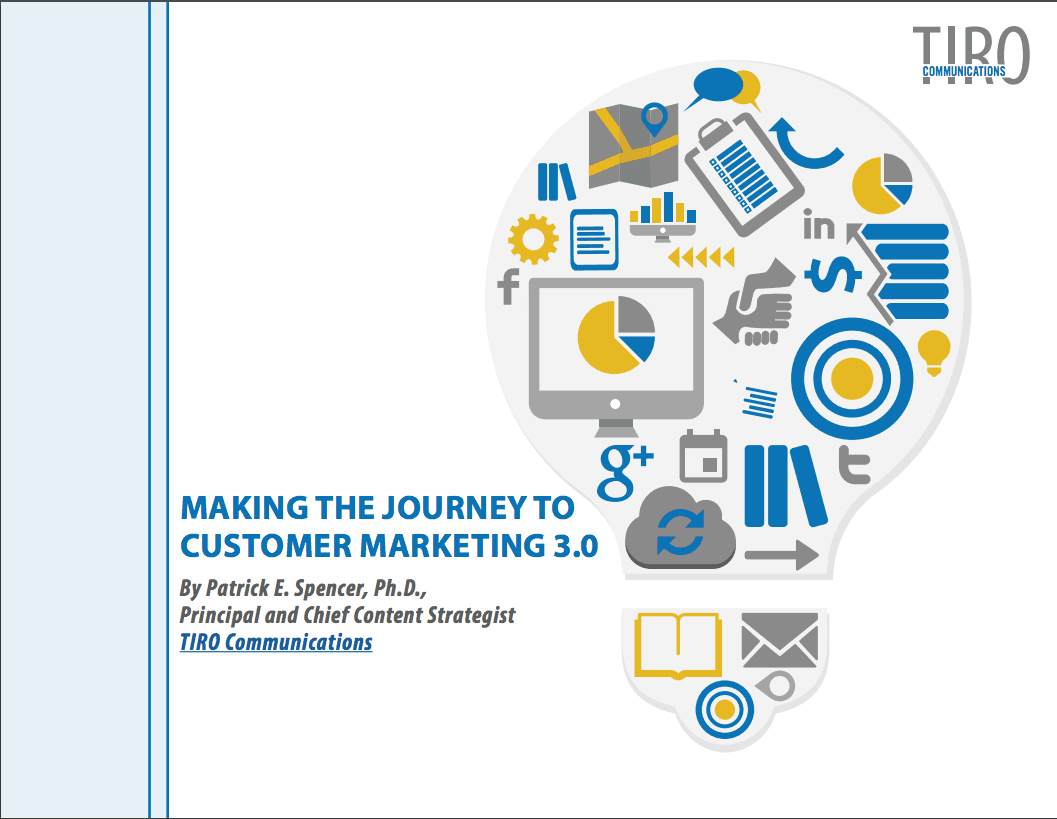Animated Video Case Studies
- By Patrick Spencer
- •
- 01 Mar, 2017
- •
The evolution of great customer storytelling.

Ascendance of Customer Storytelling
The evidence is almost incontrovertible when it comes to the importance of customer case studies. This was true 15 years ago when I worked with the IBM software team to build written customer case studies that were populated into a centralized database used by their sales team. IBM account representatives used them as corroboration with buyers to demonstrate that their peers were successfully using IBM software products.
The importance of case studies—or more specifically customer stories (or testimonials), for the space has expanded to include other content artifacts such as video, podcasts, business value impact studies, and blog posts—has only grown over time. Additionally, as the buyer journey funnel has developed in recent years, the role case studies play across the buyer funnel has expanded.
Take the top of the funnel as an example. If your case studies are optimized for SEO on your website, then you’ll generate case study traffic from buyers who are just starting to gain a basic understanding of their business issues and available solutions. And as they are spending more time researching solutions (80 percent indicate they do so), the more of your content that they find at this stage of the journey, the more brand awareness you can influence. The top three resources buyers consult when initially mapping out a solution include web search (68 percent), vendor websites (54 percent), and peers and colleagues (49 percent).
Case studies typically play a greater role in the middle of the journey when buyers seek to identify their business requirements and understand what type of solution aligns most closely with those. Thirty-eight percent of buyers list that they use case studies to gain an understanding of a vendor’s capabilities and to confirm that peers with comparable business issues have successfully used the vendor’s solution to address them.
Where Does Customer Storytelling “Rank” for You?
So, how much customer storytelling content does a marketing organization need to produce? Research shows that approximately 25 percent needs to contain customer evidence and stories. And for those organizations that adhere to this ratio, their content marketing activities prove to be 30 percent more effective than companies that fail to do so.
This should make a lot of sense. Storytelling is at the heart of great content marketing, and there is no better way to tell the story of your product, service, or company than through customer stories and evidence. You’d think this is relatively straightforward and easy to accomplish.
Surprisingly, countless marketing organizations have completely bungled their attempts—or lack thereof—when it comes to customer storytelling. Some simply don’t believe it is needed, and they allocate few dollars and resources. However, this leaves gaps in demand-gen and sales enablement programs that leak lost opportunities and revenue. Others go through the motions but task in-house resources or outside resources (freelancers and agencies) that create content that fails to tell customer stories in an engaging and compelling manner. Some of the keys to good storytelling include …
- A journalistic approach to interviewing
customers to extract interesting angles
- The ability to work with a customer to pinpoint
quantifiable data and to develop financial calculators to turn those into
tangible business outcomes
- A broad understanding of market drivers,
customer pain points, and product capabilities
- A journalist who knows how to spin an
interesting story based on facets of the customer’s background, industry and
market trends, and product capabilities
If you’ve found the above attributes and abilities in an in-house content marketer or inexpensive freelancer, then you’ve struck gold and are in the 95th percentile or better. The reality is that your customer stories require journalistic investigation and journalistic storytelling to be effective, and thus you should be judicious in searching for and retaining the services of an agency or individual who knows how to find, construct, and tell great customer stories.
Video Is “King” in Content Marketing
Video is transforming content marketing, and we’re talking about all different types of videos: customer testimonials, product demos, solution overviews, and product and solution videos using whiteboards and animation. Consider some of the ways video outperforms other content assets or increases the results of other content:
- Click-thru rates for sales and marketing emails
increase 200 to 300 percent if video is included
- Conversion rates increase 80 percent if video on
a landing page
- Half of executives look for more information on
a product or service after watching a video (65 percent go to the vendor’s
website and 35 percent call a vendor)
- 90 percent of buyers say videos are helpful in
aiding the decision-making process
- 80 percent of buyers recall a vendor video that
they watched in the past 30 days
Demarcating Video Storytelling Best Practices
Video testimonials have been a mainstay of many content marketing programs for over a decade. We realized huge value out of them at Symantec and LivePerson. The magic was not in the volume of videos produced (my teams generated over 350 in nine years at Symantec and close to 70 during a shorter tenure at LivePerson), but rather in the art of telling a story. This required careful coaching of customers before and during the shoot, choreographing of b-roll capture, and then in editing everything together.
It also meant that we needed to understand our audience and what would generate optimal impact. The length of each video needed to be around two minutes. As video length grows, audience engagement shrinks. We ran A-B testing on 60 or 70 video testimonials and discovered that videos longer than two and a half minutes see a dramatic drop off in engagement. Videos at two minutes or less typically generate engagement rates of 60 percent or higher. Videos that last over two and a half minutes see engagement rates fall below 50 percent, with those that hit the three-minute mark falling below 40 percent.
Customer Storytelling via Animated Video
While video testimonials have their place in a B2B content strategy and there are certainly marketers and agencies who have the skill sets to produce video testimonials that tell great stories and hold their audience’s attention, video testimonials aren’t the only way to tell customer stories on video. Further, they may not always be the most effective format for telling customer stories. Consider the following …
- Shooting, producing, and editing video
testimonials is expensive. Travel, crew, and editing costs can quickly compile,
with the average video testimonial running as much as $10,000 or more. (Note:
With 15 years of producing and editing customer testimonial videos, we deliver high-quality
video at a lower cost for our clients.)
- Even with the very best producer on site, not
every customer is articulate and able to tell a story worth telling.
- Capturing compelling and interesting b-roll isn’t
always possible (depending on the location of the shoot and time constraints).
- Internationalization of video testimonials is tedious and videos shot in local languages do not “translate” outside of that region or country. Think about the last time you watched a two- or three-minute video with subtitles for the translation.
Animated video case studies offer an interesting value proposition. As a video asset, they garner the positive benefits of video (see above). So, why would a marketing organization supplement their existing customer-storytelling content assets or even replace some of those assets (written case study or video testimonials) with animated video case studies? The following are some of the top reasons …
- Rather than trying to coach customers who have “video
stage fright” or are simply unable to tell a compelling story, you control the
story with animated video case studies (assuming you gathered the right details
and information).
- Though many animation agencies and freelancers
still cost upwards of $12,000 to $20,000, next-generation cloud-based
technologies are lowering the time and cost. And except for isolated business
cases, you don’t need 3D animation to tell a customer story effectively (2D
will do just fine).
- We’re living in a visual age where video rules. You’ll generate much better business outcomes telling your customer stories via animated case study videos than written case studies.
Does the above mean that you should do away with your written case studies and video testimonials? No, there is still a place for both in the world of content marketing, demand-generation, and sales enablement. Rather, you may want to supplement them with animated video case studies or replace select content outputs with them.
So, how can TIRO Communications help you adopt an animated story-telling video model?
- Write the interview scripts and conduct
journalistic customer interviews that identify the data needed to tell a
compelling and engaging customer story.
- Turn that story into a written case study or
customer brief (depending on your business requirements).
- Script the narrative as well as the animated
builds for telling the customer story.
- Animate and edit (production and
post-production) the animated case study video.
- Pinpoint engagement strategies to promote the video case study across demand-gen, social media, employee, partner, and customer advocacy programs.













